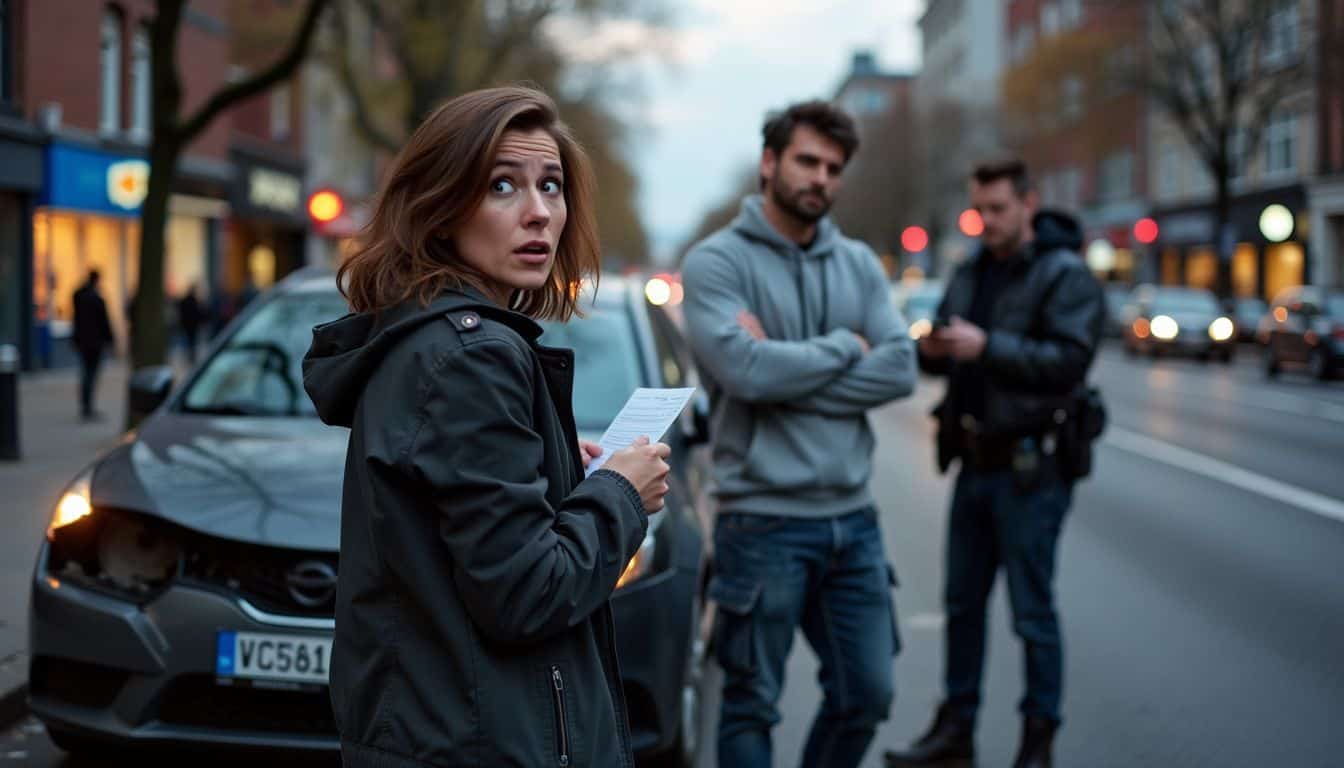Ever been in a fender-bender and thought you were off the hook? Think again. You can actually get a ticket after an accident, even days later. Yep, that’s right – the law has a long memory.
This article will spill the beans on five shocking facts about post-accident citations. Buckle up, it’s gonna be a wild ride.
Key Takeaways
You can get a ticket days or even months after an accident, depending on your state’s laws.
Fault in accidents isn’t always clear-cut. Insurance companies use tech and evidence to determine who’s to blame.
Getting a ticket after an accident can raise your insurance rates. A single speeding ticket can bump up premiums by 34% on average.
Accident reports are crucial. In Louisiana, you must report accidents with injuries, deaths, or damage over $500.
Some states have harsh contributory negligence laws. In Virginia, being just 1% at fault can cost you your entire claim.
Table of Contents
Receiving a Ticket Following an Accident
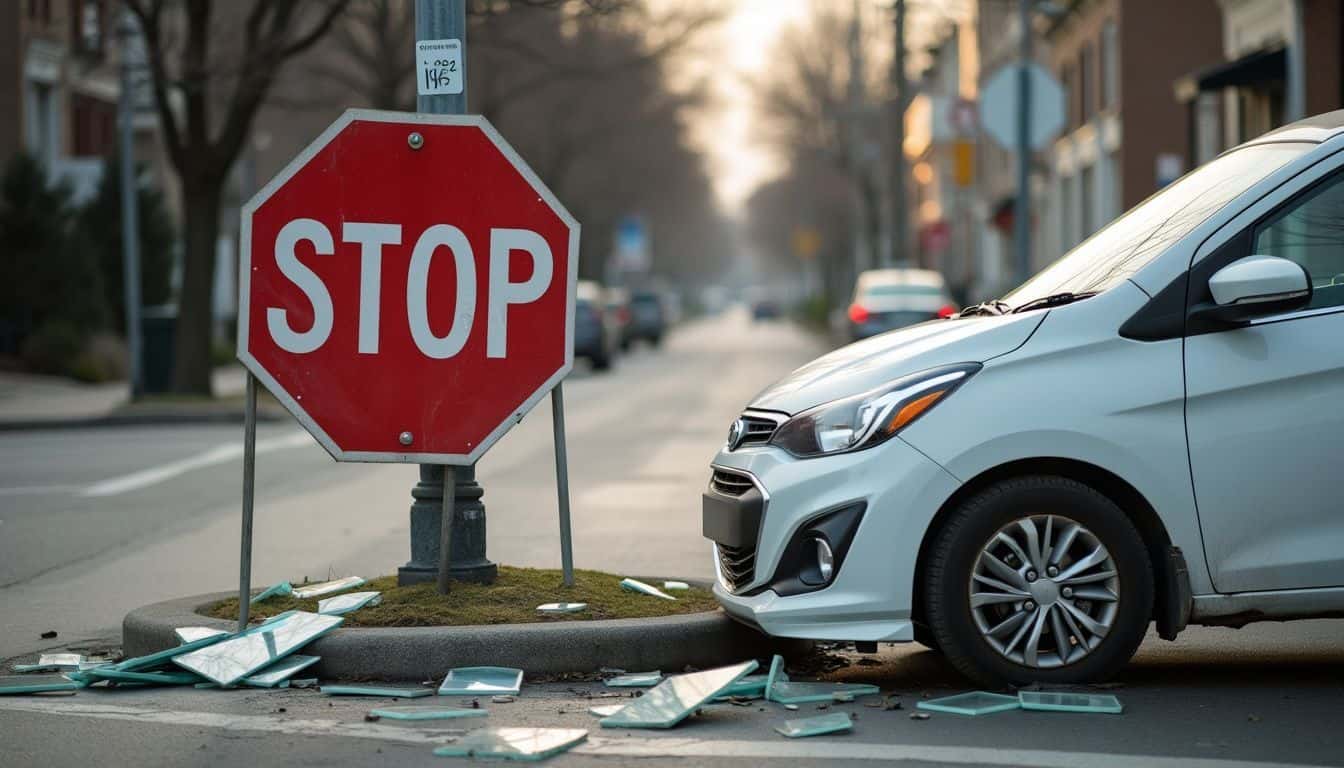
You might not get a ticket right after a crash. Cops can give you one later – even days after. It’s not always clear-cut who’s at fault in a fender-bender.
Causes of Delayed Traffic Tickets
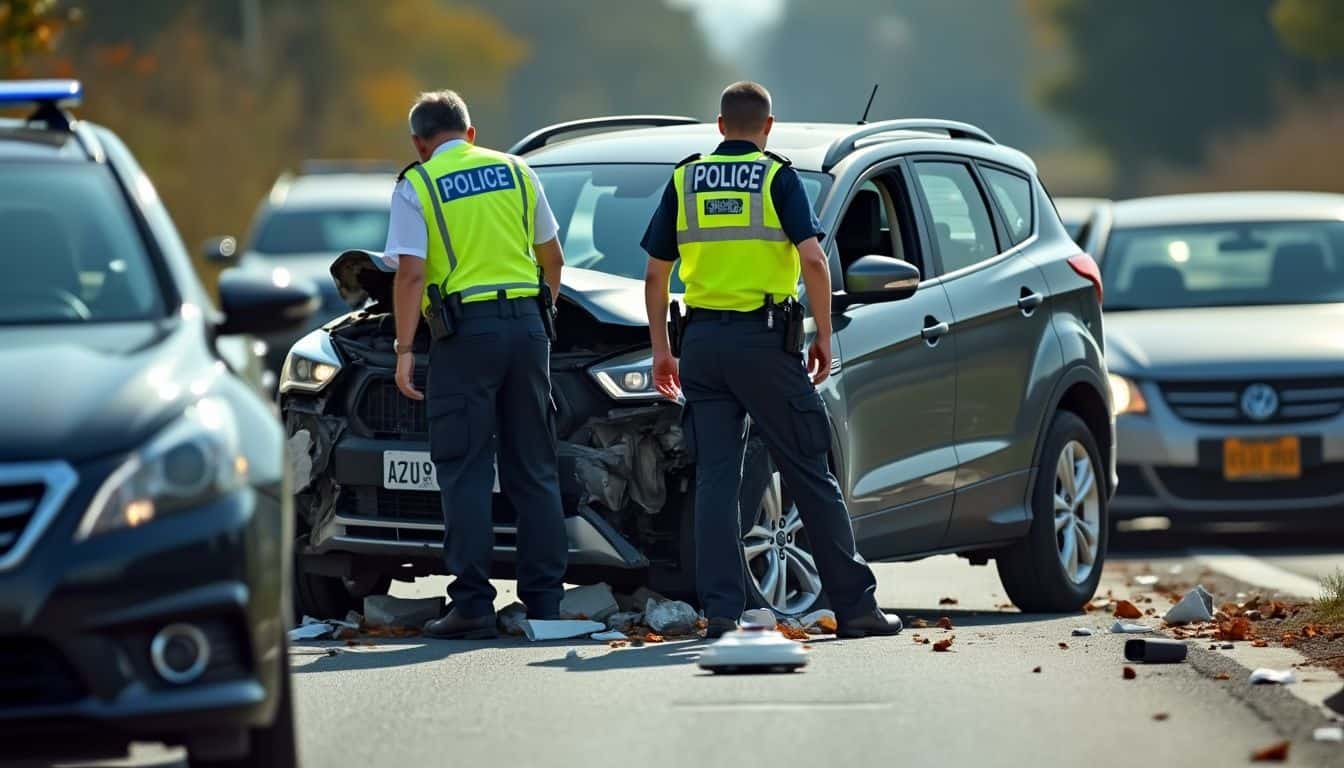
Traffic tickets after an accident don’t always come right away. Sometimes, cops need more time to figure out what happened. This delay can happen for a few reasons. Hit-and-run cases are tricky – officers might need extra time to track down the runaway driver.
Or, if it’s not clear who caused the crash, they’ll dig deeper before handing out tickets.
Complex accidents also slow things down. Picture a pile-up on the highway – that’s a mess to sort out. Cops need to talk to lots of people and look at all the damage. They might even call in experts to help.
Each state has its own rules about how long after a crash they can give out tickets. It could be days or even months, depending on where you live. The key is patience – sometimes, it takes time to get the facts straight.
Role of Fault Determination
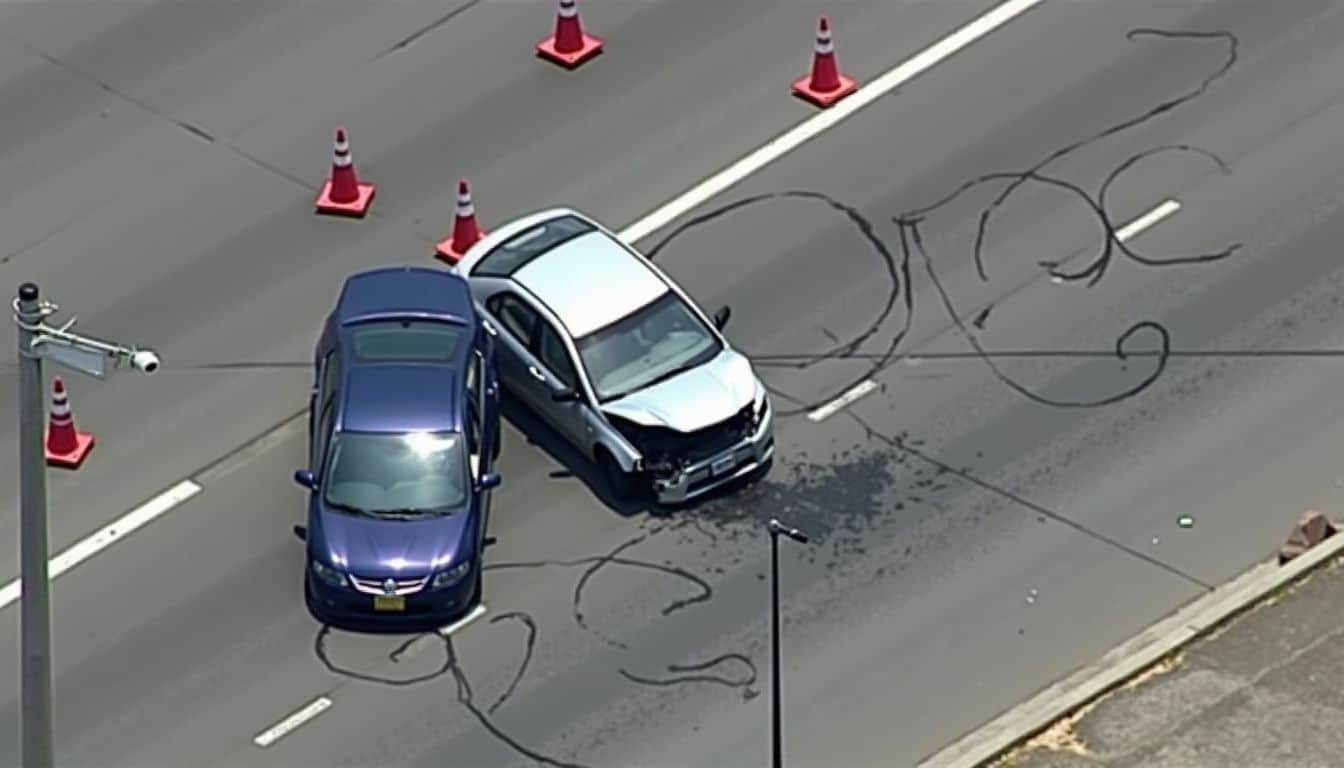
Fault determination plays a big role in car accidents. It’s not just about who hit who. Insurance companies use fancy tech to figure out who’s to blame. They look at police reports, witness statements, and even the damage to the cars.
It’s like being a detective, but with cars instead of crimes.
Fault isn’t always black and white. Sometimes it’s as gray as the asphalt we drive on.
I once saw this in action after a fender bender. The other guy swore I ran a red light, but the traffic cam footage showed otherwise. The insurance folks dug deep, checking everything from skid marks to my text logs.
In the end, they found him at fault. It’s a complex process, but it helps make sure the right person pays up.
Legal Implications of Tickets After Accidents
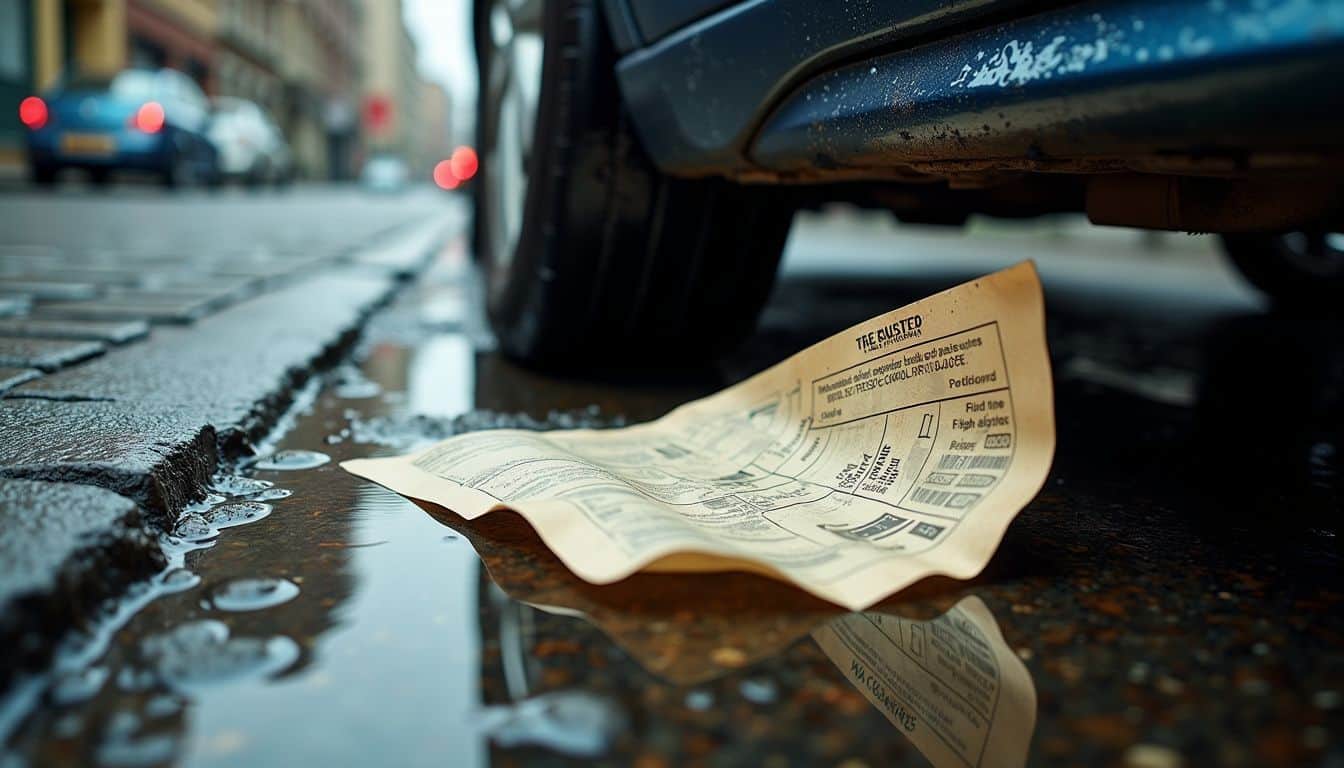
Getting a ticket after an accident can be a real headache. It’s not just a piece of paper – it can mess with your insurance and even land you in hot water legally.
Connection Between Tickets and Legal Liability

Traffic tickets and legal responsibility often go together after a car crash. Getting a citation doesn’t mean you can’t ask for money for injuries, but it can make things complicated.
If you admit guilt to the ticket, the other driver might use that against you – they could say you caused the accident and shouldn’t get paid. The comparative fault rule allows blame to be shared, though.
So even if you’re partly responsible, you might still get some money. It’s a balance between admitting mistakes and protecting your rights.
I once got a ticket after a minor accident. It felt unfair, but I learned it’s not the end of the world. The important thing is to stay calm and think before you act. Don’t hurry to admit fault or pay the fine without thinking about how it might affect your case.
Sometimes, challenging the ticket or talking to a lawyer first can save you trouble later on. A ticket is just one part of figuring out who’s responsible for a crash.
Effects on Insurance Premiums

Insurance companies don’t like risky drivers. They’ll hike your rates if you get a ticket after an accident. A single speeding ticket can bump up your premium by 34% on average. That’s about $605 more per year! It’s a hefty price to pay for going too fast.
But it gets worse. Two speeding tickets? Your rates could jump by 43%. And don’t think you’re safe if you get a ticket out of state. Insurance companies share info across state lines.
Speed has never been my friend. – Dwight D. Eisenhower
They’ll find out, and your wallet will feel it. Even minor violations can increase your premiums by 3% to 34%. It’s a game where the house always wins.
Procedures Following an Accident

After a crash, you’ll need to act fast. Grab your phone and snap some pics of the scene – they’ll be gold later on.
Significance of Accident Reports

Accident reports are your best friend after a crash. They’re like a time capsule of what happened. The police write down all the important stuff – when, where, and who was there. These reports can be gold for your injury claim.
They’ve got the officer’s take and what witnesses saw. It’s not just paperwork; it’s your safety net.
In Louisiana, you gotta report accidents by law. If someone’s hurt, killed, or there’s damage over $500, you need that report. It’s not just following rules. It’s protecting yourself.
These reports back up your story when dealing with insurance or in court. They’re your proof when things get messy after a crash.
Need for Legal Advice

Legal advice after an accident isn’t just smart – it’s crucial. Lawyers understand traffic laws and can help you avoid costly mistakes. They’ll help you with insurance claims and protect your rights.
If you’re struggling to pay for personal injuries, a lawyer can fight for fair compensation. They’ll handle the paperwork, deal with insurance companies, and make sure you don’t miss important deadlines.
You only have two years to file a civil action after an accident in Georgia.
Don’t go it alone after a crash. A good lawyer can be a big help. They’ll help you gather evidence, talk to witnesses, and build a strong case. Plus, they know how to deal with tricky situations – like if you got a ticket at the scene.
Even if you think you’re at fault, a lawyer might spot details you missed. They can also help you challenge unfair tickets or fight against claims of negligence. With legal help, you’ll be better equipped to get the outcome you deserve.
Influence of Tickets on Compensation and Claims
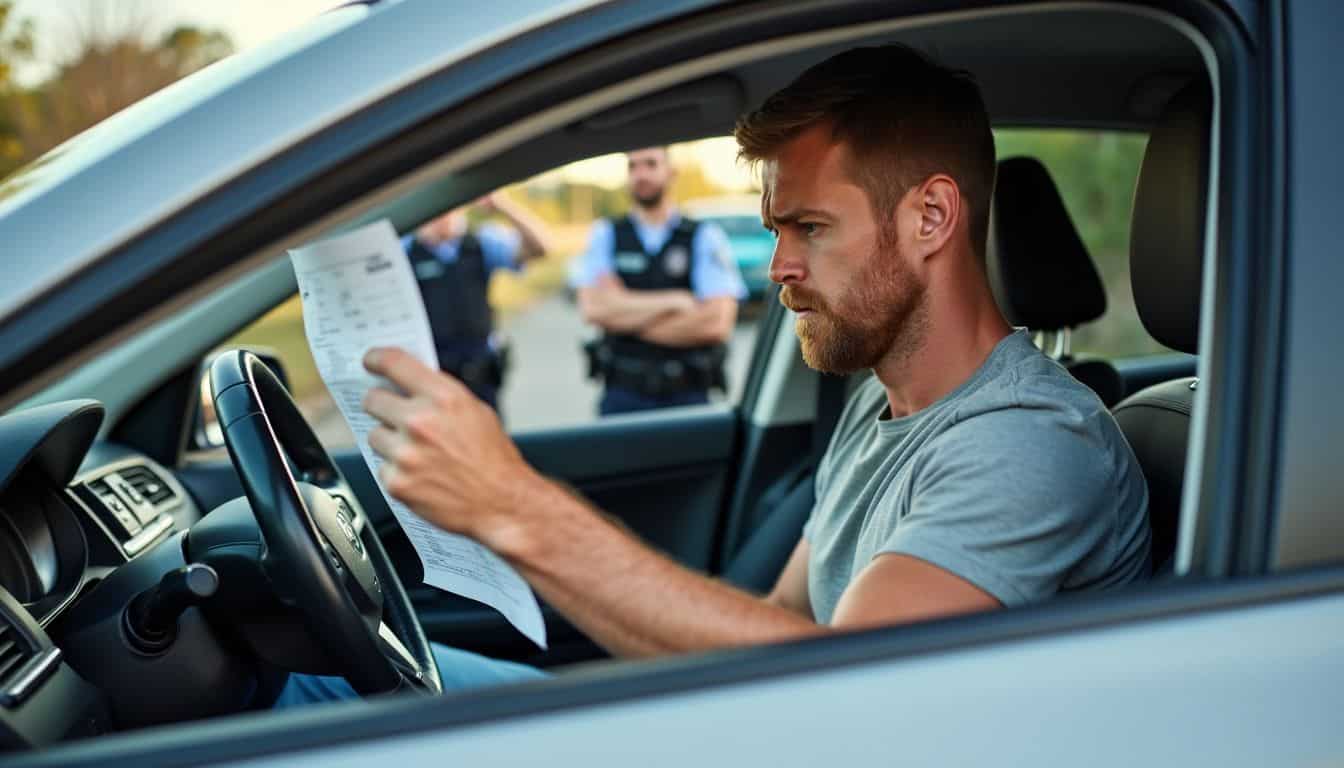
Traffic tickets after an accident can mess with your compensation. They might hurt your chances of getting a fair payout… or even tank your claim altogether.
Laws on Contributory Negligence

Contributory negligence laws can be tough. In Virginia, they’re especially harsh. If you’re even 1% at fault in an accident, you could lose your whole case. It’s like a game where one tiny mistake costs you everything.
Imagine being 99% in the right, but that 1% slip-up means you walk away empty-handed. It’s a high-stakes situation that can leave many scratching their heads.
I once saw this play out in court. A guy got T-boned at an intersection. The other driver ran a red light, but the victim was going 5 mph over the speed limit. That small error cost him his entire claim.
It’s crucial to know these laws before you hit the road. They can make or break your case if things go south. Now, let’s look at how you might challenge a traffic ticket after an accident.
Methods to Challenge Traffic Tickets

Challenging a traffic ticket isn’t just about luck. There are solid ways to fight your citation and possibly get it dismissed. Here’s how you can get out of a traffic ticket:
- Contest the ticket within 21 days. In Hawaii, you must act fast to deny the citation in court or provide a written statement.
- Request mitigation. This can help reduce penalties if you admit fault but have a good reason for your actions.
- Gather evidence. Photos, videos, or witness statements can prove the ticket was issued wrongly.
- Check for errors. Look closely at the ticket for mistakes in dates, times, or location details.
- Attend traffic school. Some courts may dismiss your ticket if you complete a driving course.
- Hire a lawyer. A traffic attorney can spot legal issues you might miss and argue your case effectively.
- Show up to court. Your odds improve if you appear in person rather than just paying the fine.
- Be polite and prepared. Dress well, speak clearly, and have all your evidence ready.
- Question the officer’s view. If they couldn’t clearly see the alleged violation, you might have a case.
- Prove an emergency. If you had to break a traffic rule due to an urgent situation, explain it to the judge.
People Also Ask
Can I really get a ticket after a car crash?
Yep, you sure can. Even if you’re shaken up from a fender bender, cops can still slap you with a traffic citation. It’s not just about the crash itself. Breaking traffic rules like running a red light or not wearing your seat belt can land you in hot water.
What kinds of tickets might I face after an accident?
The list is longer than a Vegas buffet line! You could get dinged for reckless driving, texting while behind the wheel, or even drunk driving. Blowing through stop signs or messing up right-of-way rules are common no-nos too. It’s a real mixed bag of trouble.
Will getting a ticket after a crash affect my personal injury claim?
You bet it can. If you’re hit with a traffic violation, it might make you look negligent. This could put a dent in your chances of winning a personal injury lawsuit. Insurance companies love to use these tickets to argue you were at fault. It’s like playing poker with a weak hand.
How long do I have to fight a ticket or file a claim after an accident?
Time’s ticking! Each state has its own statute of limitations for traffic violations and personal injury claims. In Vegas, for example, you’ve got two years to file a lawsuit for crash-related injuries. But don’t drag your feet – the sooner you act, the better your odds.
Should I get a lawyer if I receive a ticket after an accident?
It’s not a bad idea to have a legal eagle in your corner. A savvy personal injury attorney can help you navigate the murky waters of traffic court and insurance claims. Many offer a free consultation, so you can test the waters before diving in. It’s like having an ace up your sleeve.
Can surveillance video or eyewitness testimony help my case?
Absolutely! Video footage or a reliable witness can be worth their weight in gold. They can prove you weren’t breaking traffic rules or show the other driver was at fault. It’s like hitting the jackpot in a personal injury case. Just remember, evidence can cut both ways, so tread carefully.
References
https://www.carewgarcia.com/can-you-get-a-ticket-days-after-an-accident/ (2024-02-19)
https://www.trafficparalegalservices.com/blog/can-you-get-ticket-days-after-accident/
https://www.forbes.com/advisor/car-insurance/determining-fault-after-accident/ (2023-09-14)
https://www.lilawyer.com/blog/can-you-get-a-ticket-days-after-an-accident/
https://www.morrisbart.com/faqs/can-you-get-a-ticket-days-after-an-accident/
https://law-kc.com/articles/how-much-does-my-insurance-go-up-after-a-ticket
https://www.thezebra.com/resources/research/traffic-ticket-impact-insurance-costs/ (2024-05-16)
https://www.getgordon.com/blog/the-importance-of-having-an-accident-report-when-involved-in-a-collision/ (2024-06-18)
https://riskonnect.com/health-safety-management/what-is-incident-reporting-and-why-is-it-important/ (2024-06-29)
https://kainelaw.com/faqs/can-you-get-a-ticket-after-an-accident/
https://www.pinderplotkin.com/the-law-of-contributory-negligence-in-maryland/
https://hawaiicourtrecords.us/traffic-court-records/tickets/how-to-fight/
https://mylegalchampions.com/traffic-violations-on-car-accident/ (2024-02-28)
